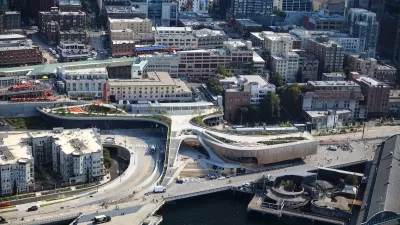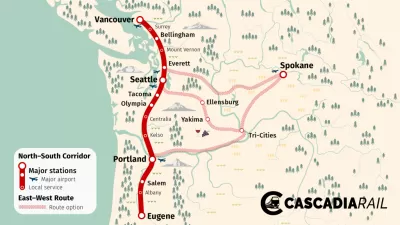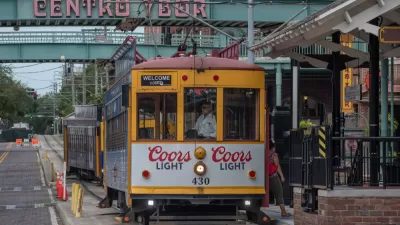The draft Seattle Transportation Plan proposes an ambitious agenda for the next 20 years of transportation planning in the city of Seattle.

The Seattle Department of Transportation (SDOT) published a draft of the new Seattle Transportation Plan (STP), culminating a year and a half of planning and public engagement.
A blog post by Katie Olsen, written for SDOT, announces the draft and asks for public input. SDOT has created a Seattle Transportation Plan Online Engagement Hub to help facilitate the learning and engagement process.
Ryan Packer also writes an article for The Urbanist providing insight into the STP in context of other recent plans, as well as transportation planning efforts reaching into the more distant past. According to Packer, today’s residents echo some of their forebears, as expressed in the words of a report by the 2000 Seattle Commission, published in 1973:
“Individual motor vehicles, in their consumption of land and energy resources, imposition of visual blight and physically dividing barriers, creation of vehicular congestion, noise, air pollution and more tangible hazards to life and safety, are the most disruptive present means of transportation in the city,” that final report stated.
So, for example, “Making space for pedestrians on the city’s streets was the number one most responded-to option when participants were asked which specific actions they’d support, while readying the city’s streets for ‘emerging technologies,’ like autonomous vehicles, ranked last,” writes Packer.
According to Packer’s assessment of the plan, all the good intentions and grand ambitions contained in the draft will only go so far as the implementation of the plan allows. “For example, the ambitious 2015 Move Seattle Levy set up a transformative plan that matches the ambitions of Seattleites only to be undercut with delays and a stubborn political reality that could set things back even further,” writes packer.
More details about what’s in the draft STP are included at the source article below.
FULL STORY: Seattle Transportation Plan Shows an Ambitious Vision, But the Hard Part Comes Next

Planetizen Federal Action Tracker
A weekly monitor of how Trump’s orders and actions are impacting planners and planning in America.

San Francisco's School District Spent $105M To Build Affordable Housing for Teachers — And That's Just the Beginning
SFUSD joins a growing list of school districts using their land holdings to address housing affordability challenges faced by their own employees.

The Tiny, Adorable $7,000 Car Turning Japan Onto EVs
The single seat Mibot charges from a regular plug as quickly as an iPad, and is about half the price of an average EV.

Seattle's Plan for Adopting Driverless Cars
Equity, safety, accessibility and affordability are front of mind as the city prepares for robotaxis and other autonomous vehicles.

As Trump Phases Out FEMA, Is It Time to Flee the Floodplains?
With less federal funding available for disaster relief efforts, the need to relocate at-risk communities is more urgent than ever.

With Protected Lanes, 460% More People Commute by Bike
For those needing more ammo, more data proving what we already knew is here.
Urban Design for Planners 1: Software Tools
This six-course series explores essential urban design concepts using open source software and equips planners with the tools they need to participate fully in the urban design process.
Planning for Universal Design
Learn the tools for implementing Universal Design in planning regulations.
Smith Gee Studio
City of Charlotte
City of Camden Redevelopment Agency
City of Astoria
Transportation Research & Education Center (TREC) at Portland State University
US High Speed Rail Association
City of Camden Redevelopment Agency
Municipality of Princeton (NJ)





























